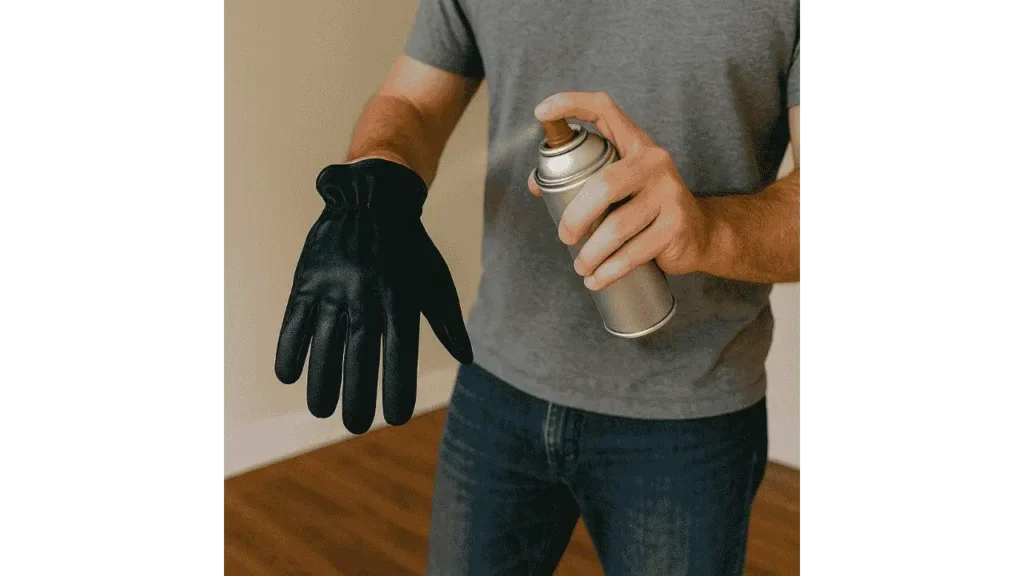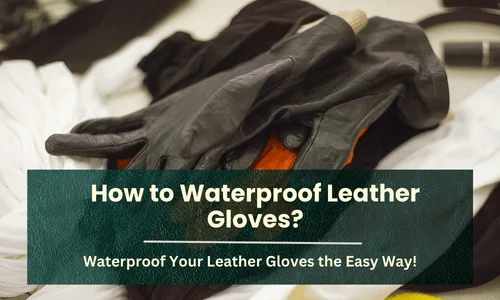Leather gloves are built for durability, but water is their natural enemy. I’ve seen good gloves lose their shape, dry out, or even crack simply because they weren’t protected from the elements. Waterproofing isn’t just about making gloves rainproof; it’s about preserving flexibility, softness, and longevity. With the right method and routine care, your gloves can stand up to the weather while staying comfortable and reliable.

Getting Ready to Waterproof Properly
Prep the Surface Before You Start
Start with clean, dry gloves. Any dirt or moisture left behind can affect the way the product bonds with the leather. Wipe them down gently and allow them to air dry. Work in a well-ventilated space to avoid breathing in strong chemical odors. And don’t forget to lay down newspaper or a clean cloth, waterproofing can get messy.
“Surface prep is half the battle when it comes to waterproofing,” says Aaron Clark, leather restoration technician at GloveGuard. “If the glove is damp or dusty, the product won’t soak in evenly.”
Choosing and Applying the Right Product
Wax and Cream for Deep Protection
Wax-based creams or conditioners with water-repelling properties offer some of the longest-lasting protection. Scoop a small amount onto a soft cloth and rub it into the leather using circular motions. Focus on seams and folds, those are the most vulnerable spots. Let the gloves sit for a few hours so the leather can absorb the treatment, then buff away any excess with a dry cloth.
Waterproofing Spray for Quick Coverage
Spray treatments are fast and easy to apply. Hold the can about six inches from the gloves and spray an even coat. Avoid oversaturating, the goal is to create a barrier, not soak the leather. Let them air dry completely before use.
“Sprays are great for quick touch-ups or synthetic blends,” notes Natalie Hess, gear care specialist at OutdoorHand Co. “Just make sure to apply thin coats, or you risk stiffening the leather.”
When to Consider Professional Treatment?
For expensive or premium gloves, a professional service might be the better option. These treatments often penetrate deeper and offer more uniform coverage. If you wear gloves daily in wet conditions, the cost can pay off in extended life and better performance.
Maintain the Waterproof Layer Over Time
Reapply as Needed Based on Use
Leather needs upkeep. If you wear your gloves often or use them in harsh weather, reapply the waterproof treatment more frequently. Glove quality also matters. Higher-grade leathers may hold onto treatments longer, while thinner or less treated leather might require more attention.
Know the Signs It’s Time to Reapply
If your gloves start to feel dry, stiff, or absorb water instead of repelling it, it’s time for another treatment. Regular visual checks and feel tests will help you stay ahead of moisture damage.
Read More: Are Leather Gloves Good for Winter?
Final Takeaways
Waterproofing leather gloves keeps them supple, strong, and ready for any weather. Waxes and creams offer long-lasting protection, while sprays give a quick shield when you need it. Choose the method that suits your glove type and how you use them. Keep an eye on wear, reapply as needed, and don’t wait until damage shows to take action. Protect them right, and your gloves will return the favor for many years.
- How to Wear an Oversized Leather Jacket? Style Tips for a Casual Look - August 6, 2025
- How to Fold a Leather Jacket? - August 5, 2025
- How Should a Leather Jacket Fit a Woman? - August 1, 2025



